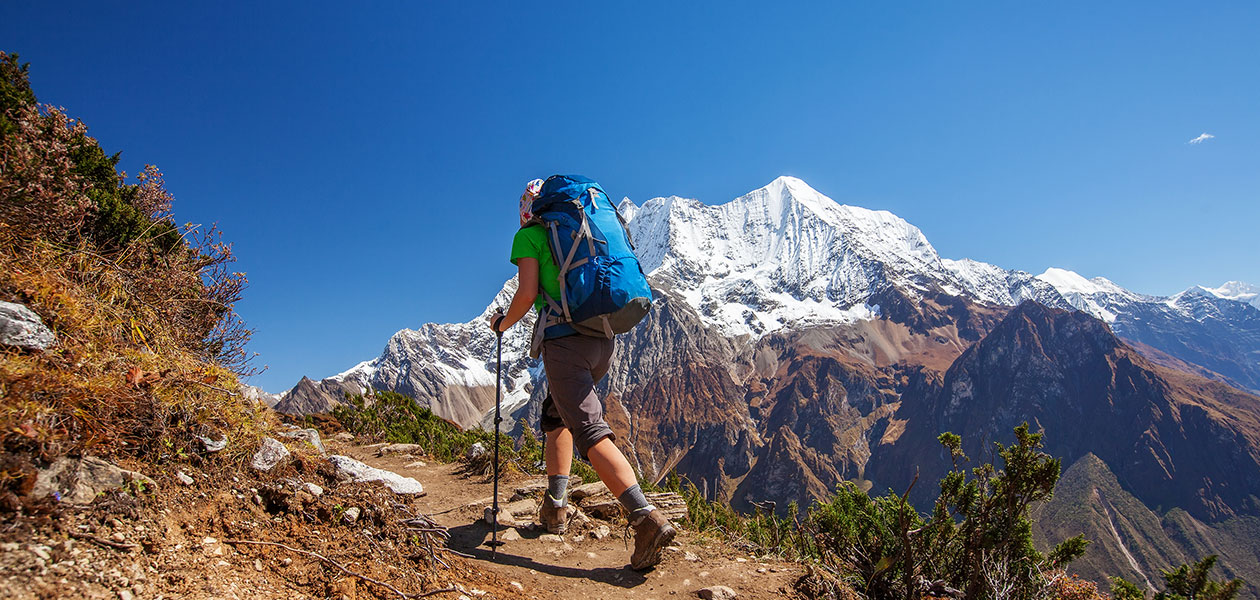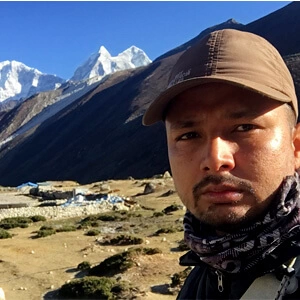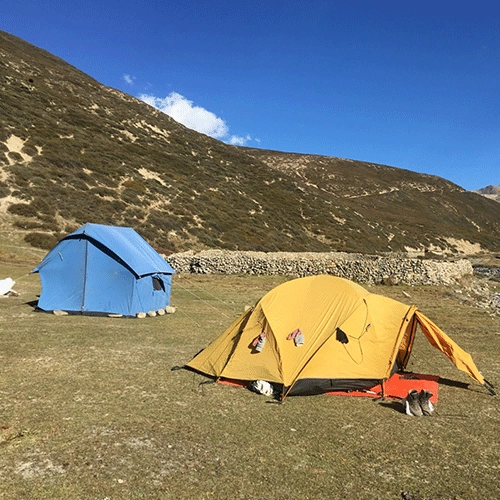Trekking Terrain and Trail Conditions
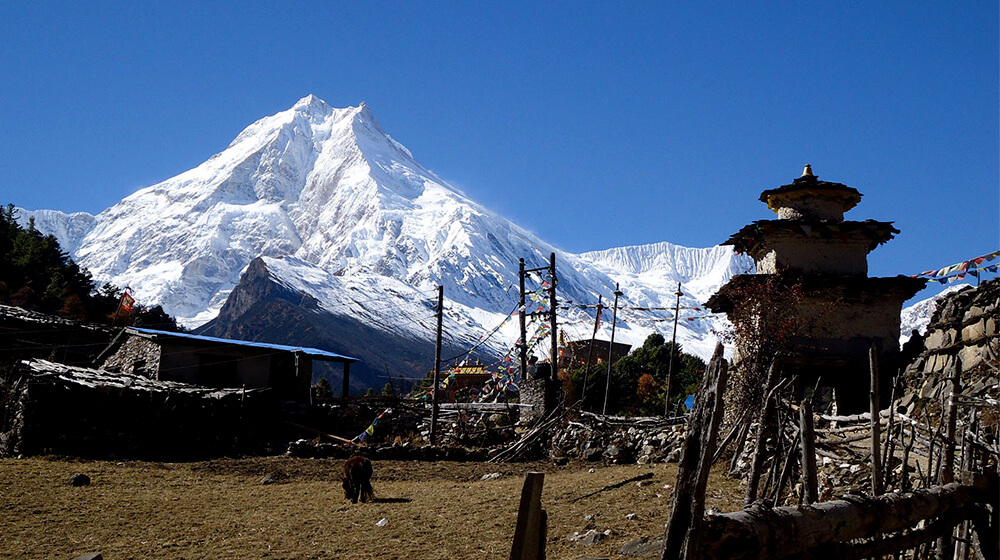
Description of the Trail
The trekking adventures in the Himalayas lead to the most isolated and remote parts of the country. During your Himalayan exploration, you will have to traverse across the rugged mountain areas that don’t have proper access to transportation modes. As the Manaslu Circuit Trek is more remote and still has intact wilderness factors, this off-beaten trek is considered more into the wild than other mainstream treks, which contributes to the overall Manaslu Circuit Trek difficulty. For the majority of the part, you will explore the virgin territories of the west-central Himalayas. Although there are dense settlements along the lower trekking trails, at the higher altitudes, the villages start to thin out and are at greater distances.
As expected of this remote trail, there are a limited number of infrastructural developments along the way, and the available facilities, such as health posts, teahouses, lodges, shops, etc, are in a limited number. Initially, you will get started on this off-beaten trekking trail from a flat surface, then gradually ascend to the higher points and even cross a Himalayan pass to reach the other part of the circuit route.
Varied Terrains Encountered
The trails of Manaslu Circuit Trek pass across different climatic zones, from tropical to tundra regions. Thus, the landscape that trekking trails pass across varies depending on the climatic zone. So, overcoming this diverse landscape in the isolated part of the Himalayas is a physically demanding aspect of the Manaslu Circuit Trek difficulty. Your trekking on this off-beaten Himalayan trail starts from Machha Khola (870 meters), the most standard trek starting point in the Manaslu region.
You will then slowly follow the winding trail, passing through the traditional settlements of Deng (1,845 meters), Namrung (2,560 meters), and Lho Village (3,180 meters). As these regions are closer to the temperate zone (below 3,000 meters), you will traverse across lush landscapes and forested trails. However, for the further part, you will sub-alpine zone (below 4,000 meters) and you will slowly push toward the regions above the treeline. The stop points of this trek, like Samagaon (3,800 meters), Dharamsala (4,460 meters), and Larke La Pass (5,106 meters), are the highest elevating part of this circuit trail that stretches across three-climatic zones, sub-alpine, alpine (below 5,000 meters) and trans-Himalayan (above 5,000 meters).
So, you will need to traverse across the loose soil, rocky, boulder-strewn, wide meadows, and even close to the glacier moraines during this part. After reaching Bimthang (3,590 meters), which is on the other side of this circuit, you will follow the descending trail toward Gho (2,515 meters) and Chamje (1,430 meters) below the treeline before driving back to Kathmandu.
Challenges Posed by the Terrain
As the Manaslu Circuit Trek is an off-beaten exploration of the Himalayas to the remote section, there are several challenges this trekking trail poses. For instance, the Himalayan trekking routes are known for their physically demanding steep sections. Continuous ascends and descending throughout every day’s trek puts a considerable strain on the leg muscle. Similarly, you will have to often follow the narrow ridges on the mountain side, where you will have to be very careful with your every step.
Besides that, the rocky and uneven terrain contributes further to the Manaslu Circuit Trek difficulty. Moving along these uneven sections needs a good amount of balance and core strength to maintain the balance. During this circuit trek, you will also traverse across the boulder-strewn trails and landslide-prone section which can be challenging part during the rainy seasons. On top of that, the river crossing part can also be dangerous with wooden bridges when the water level is high. Compared to that, suspension bridges are much safer, but still, the significant height of the suspension bridge can be a bit of a challenge for trekkers who have a fear of heights.
Altitude and Acclimatization
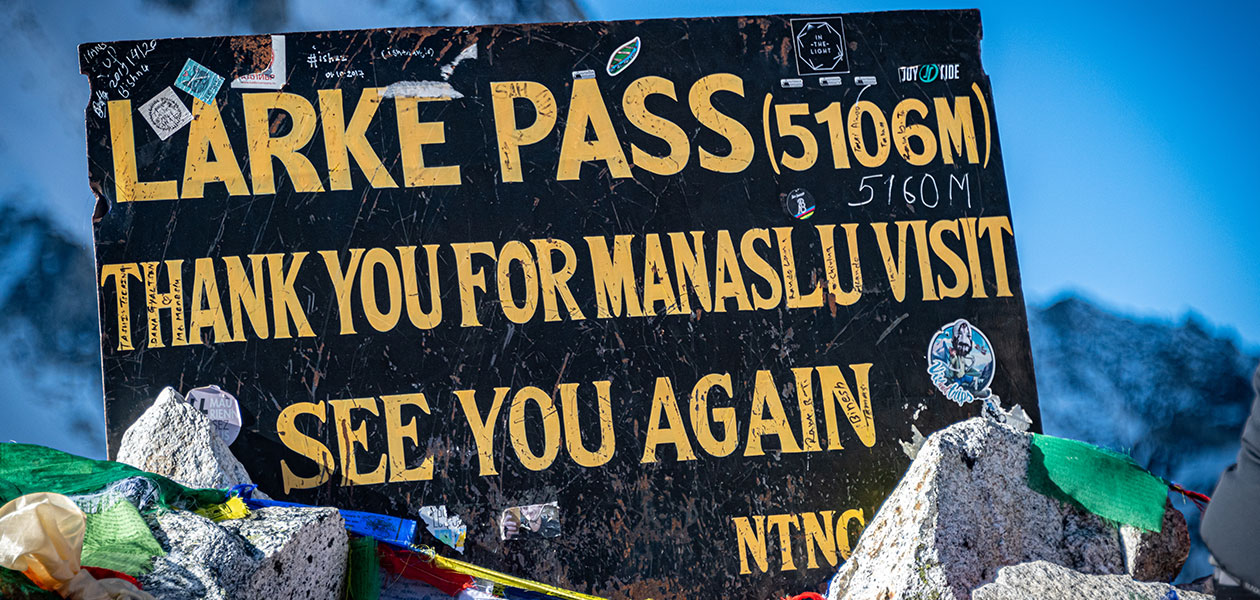
Highest Points and Key Elevations
Although the Manaslu Circuit Trek difficulty is at a moderate level, the elevation points in this trek are quite major. In this circumnavigating journey of the Manaslu, you will navigate your way across several high-altitude settlements and even cross one of the highest passes in the Himalayas. Your journey on this off-beaten trail starts from Machha Khola, which is at an elevation of 870 meters (2,854 feet). Then, the trail stretches across mildly elevation settlements along the way before reaching the section with considerable altitudes.
The settlements of Samagaon (3,515 meters), Samdo (3,800 meters), Dharamsala (4,460 meters), and Bimthang (3,590 meters) are the significant altitude jump points of this trek, while Larke La Pass (5,106 meters) is the highest. So, the overall elevation gain in this circuit trek is about 4,236 meters (13,897 feet) from the starting point to the highest point of the route.
Risks of Altitude Sickness
Like any other high-altitude adventure, the risk of altitude sickness is a major factor in the Manaslu Circuit Trek difficulty. Trekkers who don’t acclimatize properly to the rising altitudes start to show mild symptoms related to sickness after crossing an altitude of 3,000 meters. As this circuit trekking adventure barely crosses the trans-Himalayan climatic zones and you don’t have to traverse across the alpine, there is only a risk of a milder form of altitude sickness, Acute Mountain Sickness. Compared to the severe forms of altitude sickness that climbers have to be cautious about, such as HAPE (High Altitude Pulmonary Edema) and HACE (High Altitude Cerebral Edema), AMS can be considered a light form of altitude sickness that can easily cured and prevented with the right measures.
You need to be vigilant about several symptoms of altitude sickness, such as headaches, nausea, shortness of breath, fatigue, loss of appetite, dizziness or lightheadedness, etc. Although they are not severe, they can still make the journey uncomfortable and affect the overall experience, so it will be wise to follow the necessary precautionary method. Green Society Adventure also follows all the necessary protocols to mitigate the risks of altitude sickness during this circuit trek exploration. You will walk slowly on the gradually inclining trail, taking sufficient breaks, and you will also enjoy the acclimatizing day along the trail before switching to the high-altitude points.
Tips for Proper Acclimatization
Although the 14 Days Manaslu Circuit Trek of Green Society Adventure has been carefully planned to mitigate the risks of altitude sickness during the adventure, trekkers also need to be careful about several other acclimatization aspects to keep their risk at the sideline. Here are some helpful tips from industry experts to minimize the risk of altitude sickness, which is one of the significant factors of the Manaslu Circuit Trek difficulty.
Tips for Effective Acclimatization During Manaslu Circuit Trek
- Walk slowly while ascending to higher altitudes; too fast a pace can trigger the symptoms of altitude sickness
- Tekae enough rest breaks along the trail and know your limits
- Drink enough fluid during the trek, at least 3 to 4 liters per day
- Emphasize eating balanced and don’t just prioritize the taste; you need to replenish the lost energy
- Train properly so you can keep up with the physical demands of the trek, and it also helps with the acclimatization process
- Don’t consume alcohol, caffeine, or smoke cigarettes; it hinders the acclimatization process
- Get enough rest, and don’t over-exhaust yourself
- Keep an eye out for the symptoms of altitude sickness and consult your guide immediately for appropriate countermeasures
- Packing altitude sickness medication, electrolytes, and high-energy bars is also quite beneficial
Weather and Climate
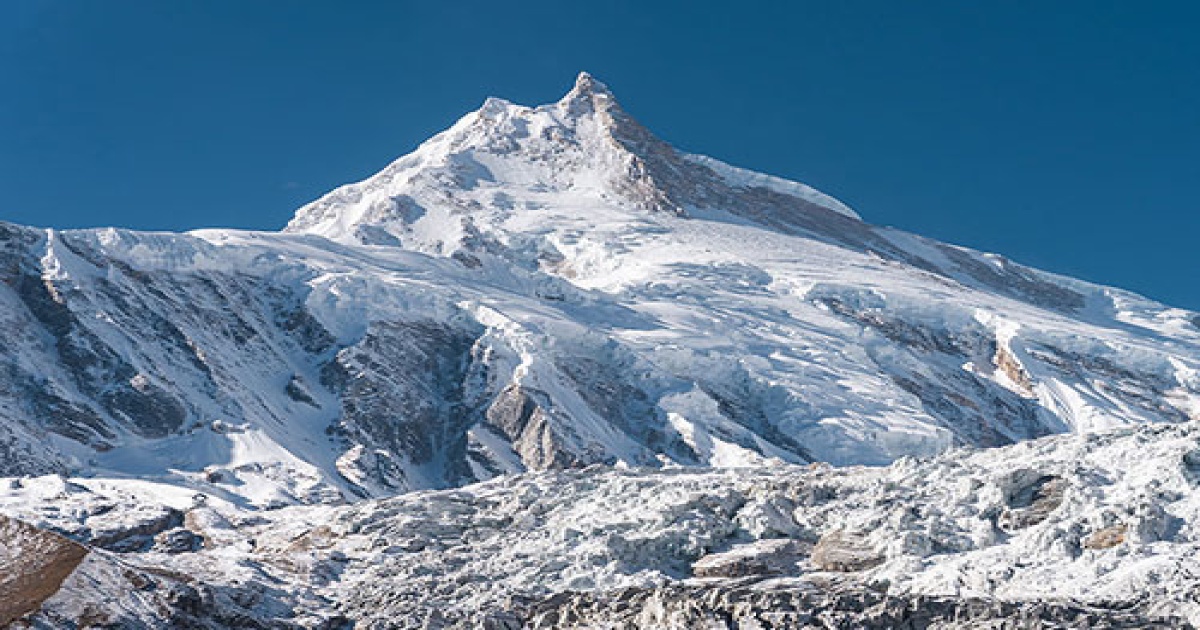
Best Seasons for the Trek
Doing this off-beaten trekking adventure during the peak season also helps to deduce the weather-related challenges from the Manaslu Circuit Trek difficulty. The ultimate period for high-altitude treks in Nepal is considered to be during spring (March- May) and autumn (September- November). During these periods the climate is at its most stable period, and the temperatures are also favorable. The spring season is the best time for Manaslu trek and popular for its breathtaking landscape, high-flowing rivers, rivulets and waterfalls, epic mountain vistas across stunning terrain, warmer climate even at higher altitudes, etc.
Likely, the autumn is another popular period for the trekking and mountaineering adventures in Nepal. This season is particularly famous for the most stable weather throughout the year, clear and crisp vistas due to lower precipitation, stunning fall landscapes, cool and fresh temperatures, amazing cultural experience, etc. If you want to ensure a remarkable and memorable journey and reduce the weather-related challenges from Manaslu Circuit Trek difficulty, you should definitely do this trek during one of these peak seasons.
Weather Challenges in Different Seasons
The trekking adventures in Nepal are year-round adventures that offer different perspectives of the Himalayan beauty during different timeframes. If you take part in this circuit exploration during the peak seasons, it eliminates the weather-related challenges from your trek. However, if you are planning to do this trek in any of the off-seasons, i.e., winter (November- December) or monsoon (June- August), you will have to deal with the weather-related phenomena of the trek. Doing the Manaslu Circuit Trek in winter, the coldest period in the Himalayas is considerably challenging due to the freezing and harsh climatic conditions. During the winter season, the thick fur of snow covers the landscape of the Himalayas, so you will have to put in extra physical effort to traverse such landscapes.
Similarly, the harsh, cold climatic conditions make the acclimatization process much more difficult, and you will have to bring heavy layers and gear to keep yourself warm and comfortable. As the snow covers the trails, it is also not possible to easily traverse across the high altitude points as most parts are blocked by thick snow. The monsoon season is much more subtle than the winter season. The continuous rainfall, unpredictable weather, which can affect itinerary plans, slippery trails, and potential risk of natural disasters like landslides and floods can be challenging aspects of this season, but with the right precautions and setting an ideal period of the trek, it is still possible to secure an exhilarating experience.
Preparing for Weather Variability
Despite the season of your choice for this exciting circuit exploration, it will be wise to prepare for the weather variability for this thrilling journey. As we have discussed already, you will traverse across different climatic zones in this trek, and all of the zones have their own weather characteristics. So, to secure the most enjoyable journey, you will need to consider these aspects and make preparations to bypass the weather variability of the trek.
Here is a list of weather and climatic characteristics that you can expect at different climatic zones during the Manaslu Circuit Trek:
- Tropical zone (below 1,000 meters)- This is a warm and humid region where the temperatures are mostly warm
- Sub-tropical zone (below 2,000 meters)- Moderate temperatures throughout the year; the summer season is warm, and winter season is cold
- Temperate zone (below 3,000 meters)- At this climatic zone, the temperatures are generally cooler, with a mild level of warmth
- Sub-alpine zone (below 4,000 meters)- The temperatures are cool and cold; the cold season is longer here, while the summer is short
- Alpine zone (below 5,000 meters)- In the alpine zone, the cold climate is dominant; it has a long winter period and a short summer timeframe
- Trans-Himalayan zone (above 5,000 meters)- The trans-Himalayan zone is the coldest part of the country, with permanent ice and snow sections
You will need to pack the appropriate layers and suitable gear to keep yourself warm and comfortable at different altitudes. Light layers will be sufficient for the lower region where the temperatures are warmer; however, near and over alpine altitudes, you have to be careful about keeping yourself warm as the temperatures are generally cold.
Physical Fitness and Preparation
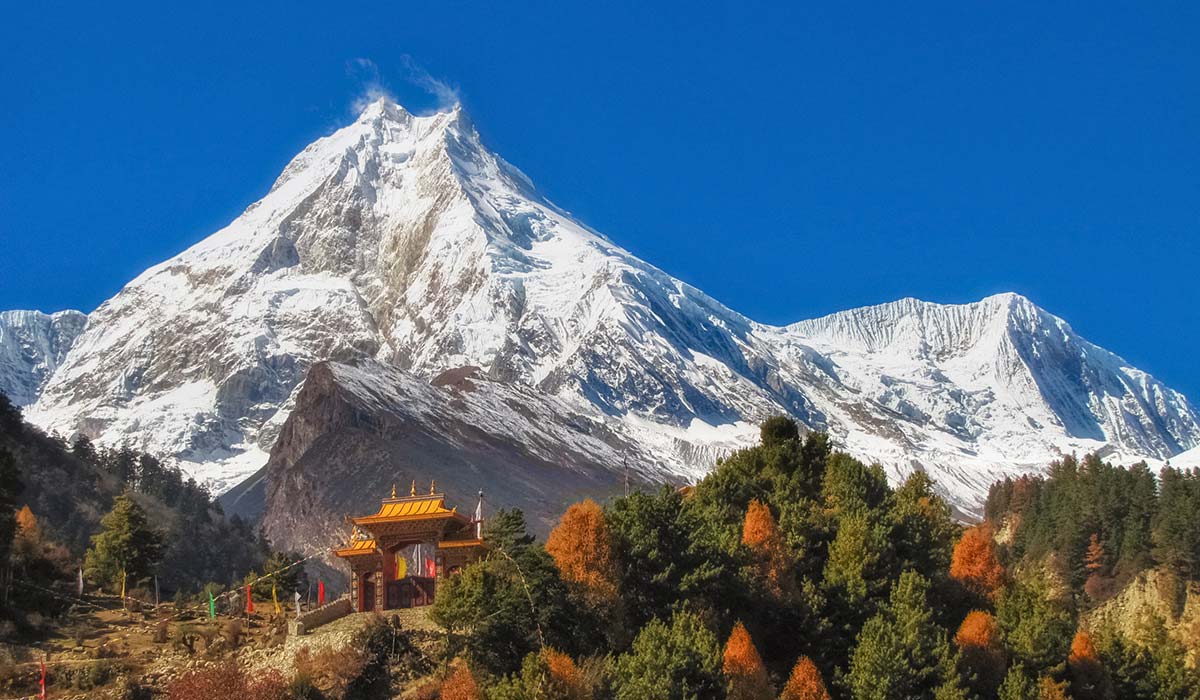
Required Fitness Level
The Manaslu Circuit Trek difficulty is at a moderate level; it is not like a strenuous mountain expedition; thus, there isn’t actually a set fitness level requirement. Even if you have just a basic fitness level, it won’t be that much of a challenge for you to traverse across the physically demanding section of the trail. You will not need to overcome the technical segments while doing this trek, nor will the general section enroute be that physically strenuous. So, on top of the fitness level, the comfort and enjoyability of the trek will depend on how much you prepare for the trek.
If you have a good fitness level and some prior high-altitude trekking experience, then it will certainly be easy for you to traverse the remote trails of this off-beaten route. You will have to consider several factors of your fitness level, such as strength, endurance, core strength, stamina and so on.
Recommended Pre-Trek Training
Traversing across high-altitude trails is in no way an easy feat; on top of that, you will have to walk on the rugged, steep, and remote trails of the Himalayas. Besides a good level of overall strength and endurance aspects, you will also need to focus on developing your core and leg strength levels. You will need to overcome several steep sections and uneven trails in this circuit exploration, thus a good level of leg strength and core strength to maintain balance across the uneven route and walk efficiently.
On top of that, including the stamina and cardiovascular exercises in your training will help improve your overall stamina reserve. Practice hikes on steep hills are another efficient way to prepare for the high altitude treks as they help you understand the strengths and weaknesses of your physical aspects for such a landscape. Plus, practice hikes are also the perfect opportunity to test out your trekking equipment.
**Note: For the Himalayan treks such as Manaslu Circuit Trek, trekkers are generally recommended to train for at least 3 to 6 weeks. You can adjust the training duration depending on your fitness level and how often you exercise**
Essential Exercises and Workouts
Here are a few of the recommended exercises that will help overcome the physically demanding aspects of the Manaslu Circuit Trek difficulty. You don’t have to put in a lot of strenuous hours to train for the trek, but staying consistent with scheduled hours of training will certainly be more effective.
Overall Strenght and Endurance Training
- Squat
- Deadlift
- Weightlift
- Bicep curl
- Bent-over row
- Lunge
- Leg extension
- Woodchop
- Leg press
- Box jump
- Burpee
- Overhead press
- Plank
- Push up
- Pull up
Stamina and Cardiovascular Exercises
- High knees
- Jogging
- Dancing
- Swimming
- Stair climbing
- Cycling
- Jumping jack
- Rowing
- Kickboxing
- Jumping rope
Related trips you may like:
Trek Duration and Daily Distances
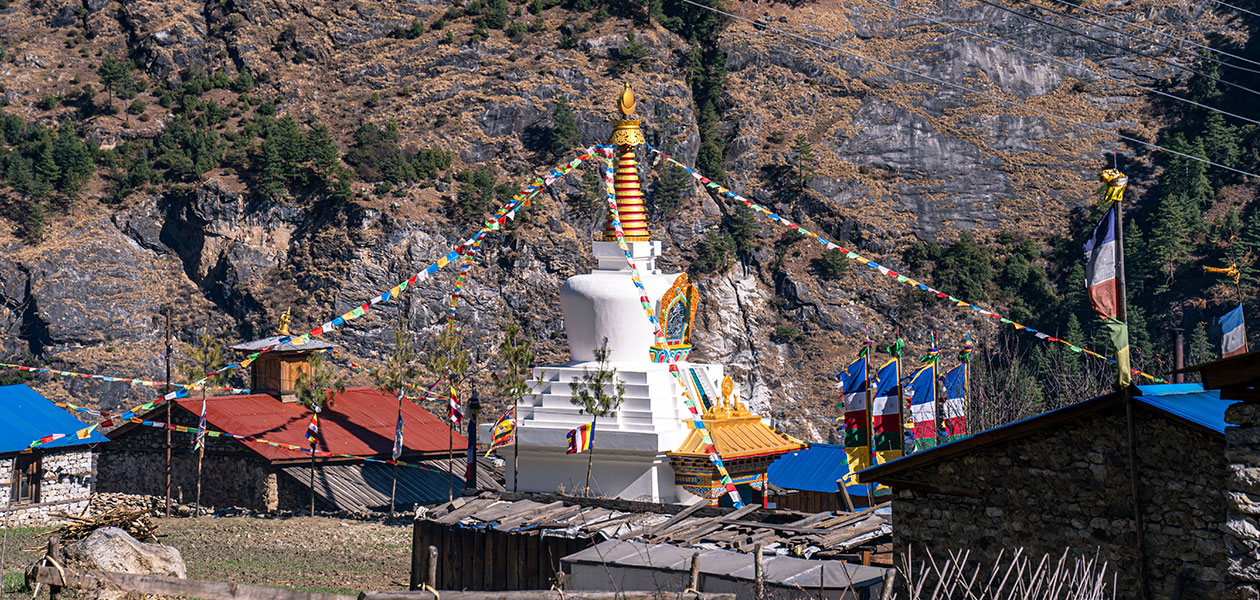
Average Duration of the Trek
The Manaslu Circuit Trek is a moderate-length exploration in the Himalayas that lasts approximately 14 to 16 days. This is the standard duration of the trek; however, depending on the specific itinerary plans, the trek can be longer or shorter than the standard period. If you want to adjust the itinerary plan of our 14-Days Manaslu Circuit Trek, Green Society Adventure also offers a full customization option. You can determine the overall walking pace, number of rest days, exploration, amenities, etc, of this package according to your needs.
Daily Trekking Distances and Time
During this off-beaten exploration, you will cover a total trekking distance of about 177 km (110 miles). As the standard duration of this trek is about 14 to 16 days, you will need to cover an approximate distance of 12.64 km (7.85 miles) per day during the trekking part. So, you will have to trek about 5 to 6 hours on average to cover the pre-determined distance of the itinerary plan. Thus, overcoming the demanding aspects of the trail can be a hurdle of the Manaslu Circuit Trek difficulty for trekkers who haven’t made an adequate amount of physical preparation.
Variability Based on Itinerary
When searching for the Manaslu Circuit Trek packages, you will come across several trekking packages that have different itinerary plans. The overall trekking plan, rest stops along the way, walking distance of the trek, etc, differs from agency to agency. However, the overall circuit trekking is the same; due to the different stop points along the trail, the package may seem different. To filter the best value package, you can check the overall itinerary plans, trekking hours per day, acclimatization day, services included, etc.
**Note: If you are new to the high-altitude Himalayan treks, you should go for the package with longer itinerary plans; shorter and rushed itinerary plans can be overwhelming for inexperienced trekkers**.
Health and Safety Considerations
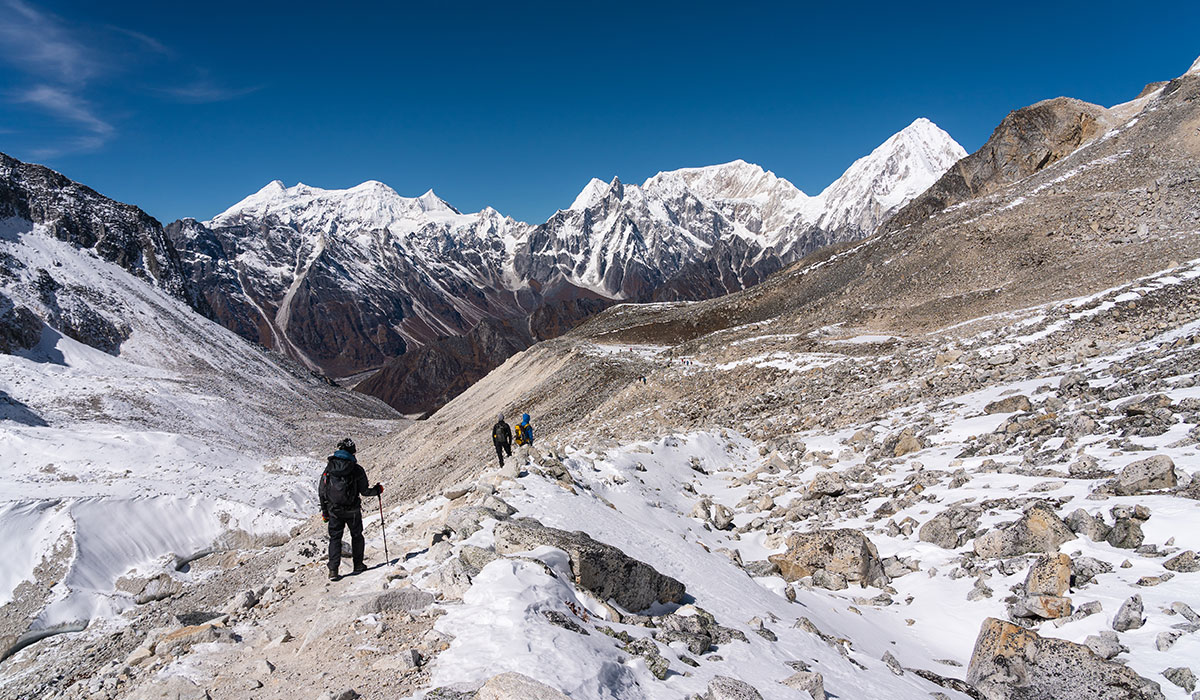
Common Health Issues and Injuries
As the Manaslu Circuit Trek is a completely remote exploration that explores the isolated part of the Himalayas, you will have to be careful about common health issues and injuries. There aren’t a sufficient number of health/medical posts along the trail, and you will need to travel long distances in between to reach well-equipped health posts. Thus, the lack of proper facilities along the way is another challenging factor of Manaslu Circuit Trek difficulty. You will need to be careful about your personal hygiene and sanitation to avoid getting sick on the trail. Similarly, traversing carefully on rugged trails is also important to avoid any kind of injury.
Safety Measures and Precautions
While doing remote and high-altitude adventures like the Manaslu Circuit Trek, you will need to be mindful of several safety measures and precautions to avoid any kind of inconvenience during your trek. Here is a list of safety measures and precautions that you can follow to ensure a safe and enjoyable journey.
- Pay proper attention to your body language and moderate your health
- Improve your fitness level so it doesn’t take a toll on you during the trekking part
- Don’t ignore the symptoms of altitude sickness, no matter how mild
- Take care of your hygiene and sanitization to avoid getting sick
- Be careful about energy intake, and don’t skip your meals
- Bring a small first aid kit with all general medications
- Pack the necessary layers and gear to keep yourself comfortable across the varied climatic zones (stay warm)
- Listen to the suggestions of your guide and porters
- Don’t walk on the edge of the ridge and stay close to the mountainside while letting yak and mules pass
- Avoid trekking under the influence it is a risky move at such altitudes
- Stay updated about the weather factors and the trail conditions
Emergency Protocols and Resources
If you are doing this through a government-licensed agency like Green Society Adventure, the agency will take care of the emergency protocols and resources. While trekking with us, your safety is our foremost priority; the licensed and experienced guide who will be leading your trekking team will monitor the health conditions of everyone throughout the journey. Besides the general health, the guide will also check your oxygen saturation level throughout the journey, making sure your health is in optimum condition to continue further in this high-altitude journey.
In case you get sick or there is any kind of emergency during the trek, the guide will coordinate with our main office in Kathmandu to take immediate and necessary actions. If you are suffering from general illness or altitude sickness, descending to a lower altitude and getting checked at a medical post will be sufficient. You will also be able to rejoin the trekking trail after getting there; however, if it's an emergency case, evacuation is the only viable option on the mountain.

